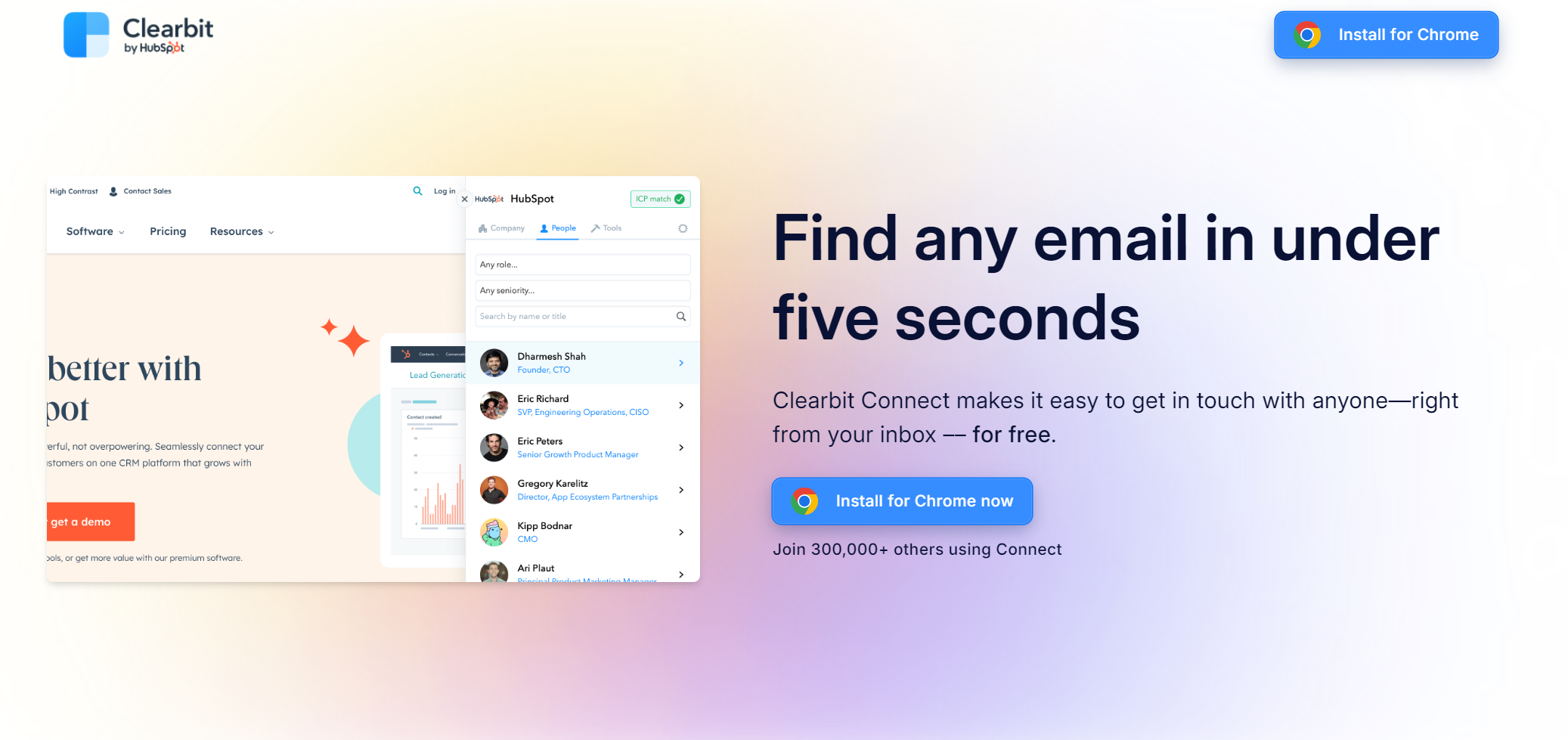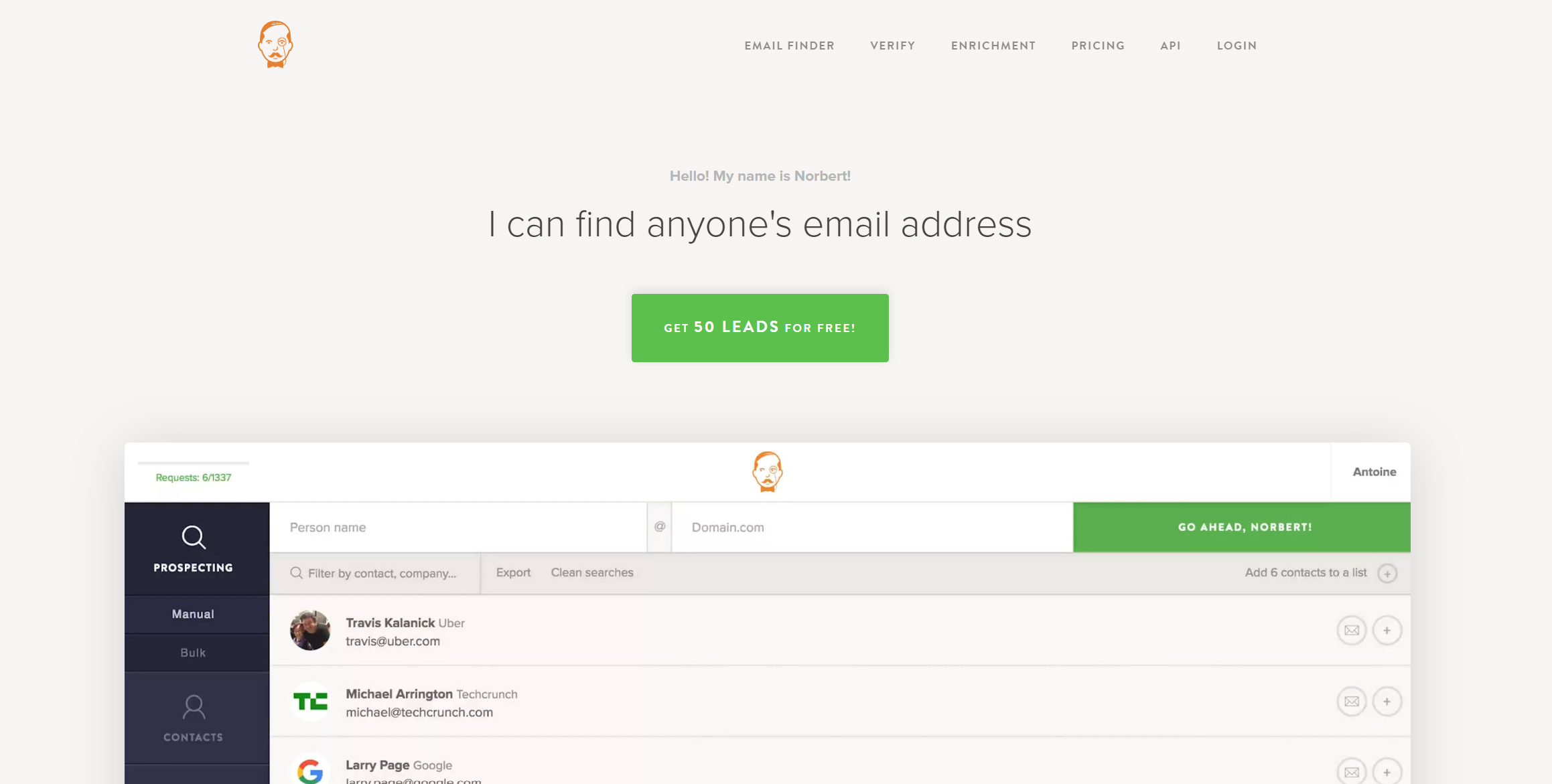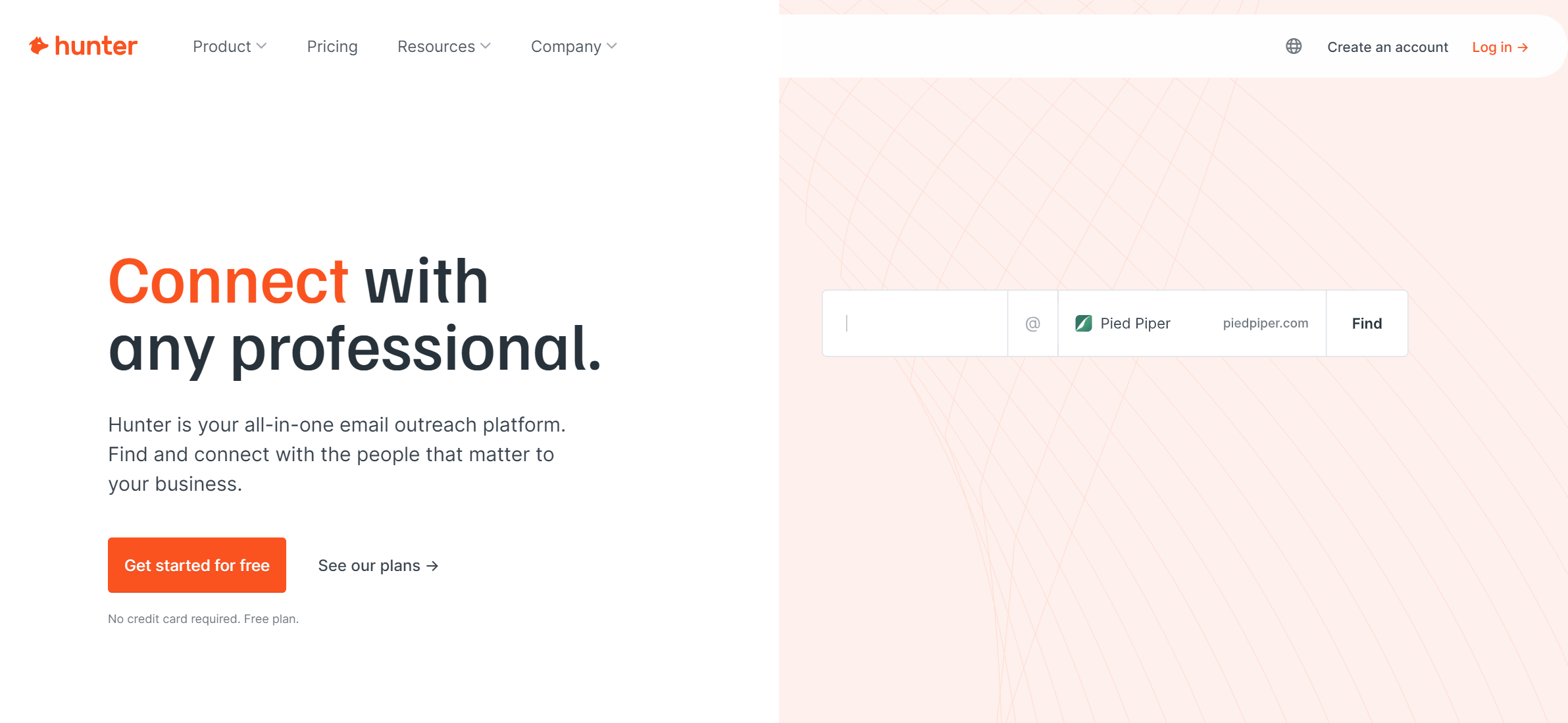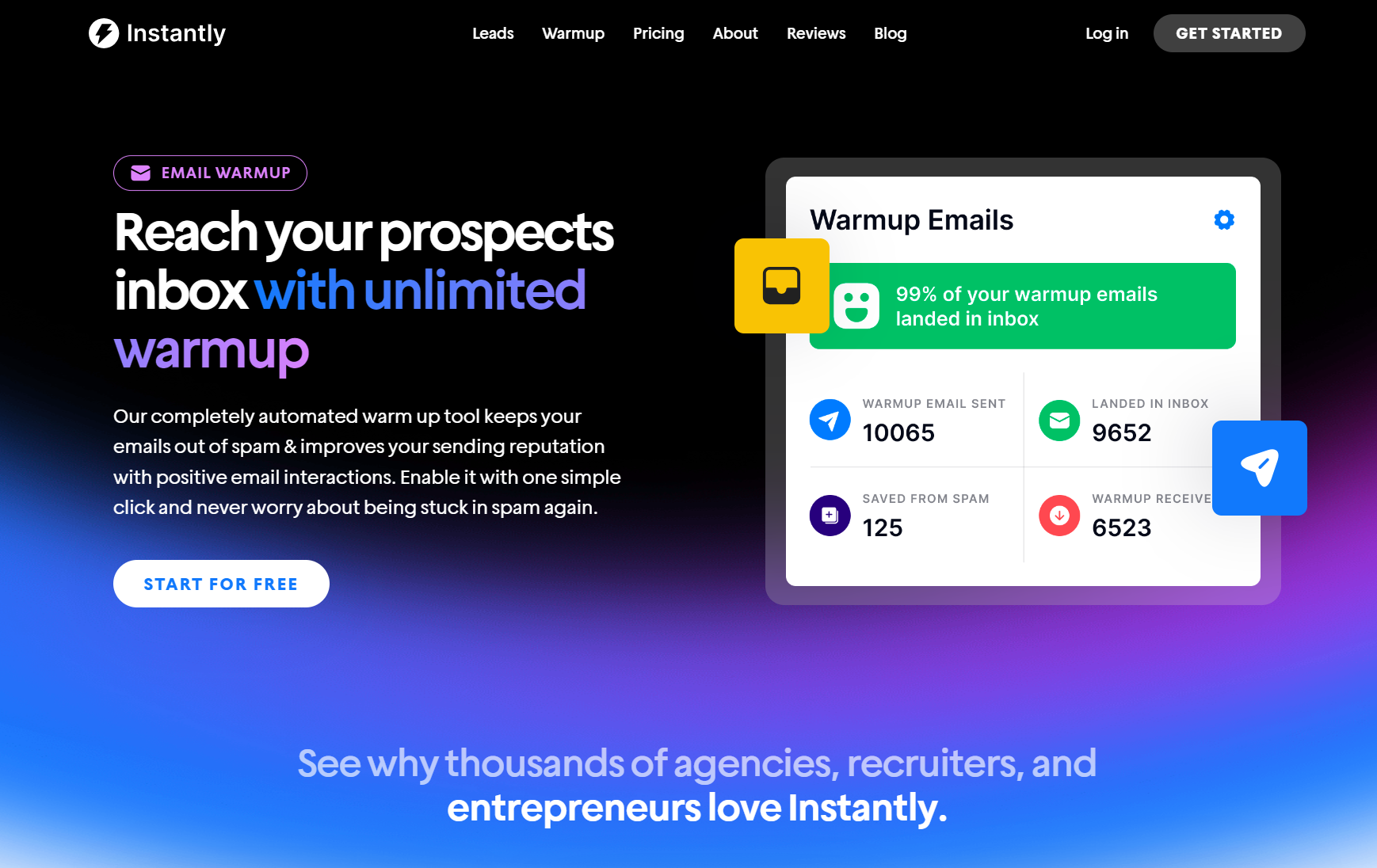Email outreach is one of the most effective ways to build new relationships, drive qualified traffic to your website and bring in new business. But it can also be one of the most challenging and time-consuming tasks for business owners and marketing professionals.
That's why we've put together this comprehensive guide to effective email outreach. In it, we'll cover everything from the essential elements of a successful outreach campaign to the most important KPIs you should be paying attention to.
What Is Email Outreach?
Email outreach is the process of contacting someone (such as a journalist, blogger or influencer) by email to try to build a relationship, promote your product or service, or secure a coverage opportunity.
Common types of cold outreach campaigns include:
- Sales offers
- Partnerships
- Influencer giveaways
- Guest blogging requests
Cold Email Outreach Best Practices
Cold email outreach can be a great way to network and build relationships with potential clients, customers, or partners. But if it's not done correctly, it can also be annoying, intrusive, or even spammy. Knowing the best practices for cold email outreach ensures your emails are well-crafted and likely to elicit a positive response from the recipient.
Personalize Your Message: Personalization displays consideration of who this person is, what captures their attention, and what their pain points might be. If you've taken the time to get to know them before reaching out, be sure it comes across in your outreach email.
Aim To Assist Or Add Value: Why should this person or group of people be interested in your email and bother to respond to it? What's in it for them? If you've done your homework and discovered a significant pain point for the prospect and can provide relief, make that clear. If you can't offer assistance, give people something they want. This could be valuable information, free resources, or even just positive reinforcement that they're doing a great job.
Short, Sweet, and Actionable: You already know this, but short emails are more likely to be opened than long ones. Additionally, emails that solicit straightforward action receive an increased response rate. Verbose emails that beat around the bush are annoying. To keep things short and direct, write the way you'd speak. Introduce yourself, say something friendly, relate to them over a shared interest, then make a sensible request.
Show Gratitude: Treat it like you're asking for a favor from someone who doesn't know you. Communicating appreciation gets results. Even just saying "Thanks so much!" to a request increases response rates. And tell them it's OK if they're too busy. Giving them an exit option makes them more inclined to help you.
Provide Social Proof: You've done your research, but your prospects probably know nothing about you. So how do you demonstrate to them that you are trustworthy?
A referral from a friend or colleague is the strongest form of social proof you can offer. If you don't have a close connection, consider using testimonials or sharing a case study from a client who benefited from your product or services. Case studies from similar companies or from within the same industry will work best in email outreach.
How to Find Contact Emails
Simple Ways to Find Contact Emails
- Look on their company website. This one is painfully obvious but it's a great place to start. Most companies provide a general support or contact email address on their company website. Others will have emails for certain staff members. Look for emails in their header, footer, About Page and Contact Page.
- Look at their Facebook Page. Sometimes companies will opt out of having a public-facing contact email on their website. If this is the case, check if they have a Facebook Page. Companies will often fill out their contact information on their Facebook Page, despite not listing it on their website. Company email addresses are usually listed on the About Tab.
- Extrapolate based on known emails. Every reputable company has a standard email naming convention that they use company-wide. For example, it could be [first initial].[last name]@company.com or [first name].[last.name]@company.com. If you can find one email for a company contact, it’s not hard to extrapolate a pattern to find the person best suited for your email outreach.
Free Tools for Finding Contact Emails
ClearBit Connect (Chrome Extension)

ClearBit Connect is actually an extension for Gmail, making it the default choice of many email marketers. Connect allows you to type in a company name or domain and it instantly spits out any available email contacts at that company.
The best part about Connect is that all email addresses are verified, so they’re completely safe for email campaigns with no need to worry about bounces.
Voila Norbert (Web Platform)

Norbert is an AI assistant for finding corporate email addresses with a free trial that includes 50 leads. While not as powerful or robust as ClearBit Connect, it’s a great option to consider.
Paid plans start at $0.10 per lead.
Hunter

Hunter is another very popular tool among growth marketers for finding company emails. Just like ClearBit Connect, you can search for verified contacts by company name. Hunter offers 25 free leads per month and paid plans start at $49 per month.
Email Warmup

Email warmup is the process of building up a positive reputation for a new email address. It is essential in any outreach campaign for optimal deliverability. What's the point of doing email outreach if you just end up in the spam folder?
Email warmup is usually done by sending emails from a new email account to friends, family and colleagues everyday. It's best to start by sending only a few emails per day and gradually increasing the number of emails you send. Our automated email warmup function works by mimicking human conversations between email accounts.
If an email address is warmed up before sending cold emails, you will be able to send more emails per day and avoid spam filters, resulting in higher open rates and higher total number of opens. When you create a new email address, the number of emails you can send per day is capped out but can be unlocked through email warmup.
For example, Google Workspace accounts can send up to 2,000 emails per day, but newly created emails won't be able to send anywhere close to the 2,000 limit without first warming up. Zoho Mail allows up to 1,500 emails per day under their Paid Edition, so long as you have 5 or more users. You can read more about Zoho Mail sending limits here.
How to Write Cold Emails That Convert
If you're looking to improve your cold emailing skills, this guide is for you. We'll cover what makes a great cold email, how to structure your message and some tips and tricks for getting the most out of your cold email campaigns.
Great Copy Is King
Excellent copy consistently outperforms the competition. As more and more emails arrive in the inbox, copy matters much more than ever before. Your reader is likely scanning their inbox hastily, looking for emails that are relevant to them. So get to the point quickly and efficiently in your copy. Don't waste too many characters with unnecessary formalities or small talk—get straight to the meat of the email and present value on a silver platter. Today's emails must be personal, targeted, and written with the objective of providing value to the reader.
Personalization
Email personalization is important because it helps you stand out in a crowded inbox. It also allows you to build better relationships with your subscribers by tailoring your messages to their individual needs and interests.
When done right, email personalization can be highly effective in driving higher open rates, higher reply rates and conversions. So if you're not already doing it, now is the time to start!
Instantly makes it easy to add personalization to your outreach emails with smart variables and the CSV import function.
First, you’ll want to build up your lead list in your spreadsheet tool of choice. We used Google Sheets for this example below.

You’ll see here that we added personalization columns for Company Name and First Name. These are the 2 most basic ways to personalize your outreach emails. Try putting either in your subject line to improve your open rates!
Once you’re happy with your lead list, you’ll need to download it as a CSV.

From the Campaign dashboard, head to the Leads tab to Import your CSV file. Instantly will automatically recognize Company Name and First Name fields, while others like Domain can be categorized as a Custom Variable from the dropdown menu.
Custom Variables can be incredibly powerful tools in improving the effectiveness of your cold outreach campaigns. You can use Custom Variables to address people by their company title, highlight recent blog content they wrote, include icebreaker questions and more.

Writing Subject Lines
Writing an engaging subject line is essential when writing cold emails because it's the first thing recipients will see. If they're not immediately interested in what you have to say, they'll likely delete your email without reading it.
To write a compelling subject line:
- Think about what would make you want to open an email from a stranger.
- Use that insight to craft a subject line that is interesting and relevant to your recipient.
- Try using humor, personalization, or even a sense of urgency to grab the attention of your prospects.
If you can capture their attention with a catchy subject line, there's a better chance they'll open your email and at least read the first few sentences. So be sure to spend some time crafting an eye-catching subject line that will make recipients want to learn more.
How to Craft Your Pitch
Are you struggling to craft a pitch that will grab someone's attention in a cold email? If so, you're not alone. Many people struggle with this important task. Luckily, there are some tried-and-true methods for crafting a great pitch.
Here are a few tips:
- Make sure you have a strong opening line. This is your first chance to make an impression, so don't underestimate the power of a good opener. Something interesting, provocative, or clever can go a long way here.
- Keep your pitch short and to the point. Nobody wants to read a long-winded email, so get to the point quickly and concisely.
- Take the time to research their business and pain points. Understanding your audience will allow you to craft an offer they can’t resist.
- Show that you understand your recipient's needs. State what you're offering and why it's valuable. Demonstrate how your product or service can help solve their problems.
- Include a call to action. Tell your recipient what you want them to do next, whether that’s signing up for a free trial, booking a meeting or scheduling a demo.
Follow these 5 tips and you’ll be well on your way to crafting a cold email pitch that will convert prospects into paying customers.
Followup Emails
A follow-up email is a vital tool in cultivating relationships with your customers. It allows you to continue the discussion and explore opportunities for collaboration. By keeping the lines of communication open, you create an environment of trust and mutual respect.
When done right, a follow-up email can:
- Reinforce your relationship with the customer
- Show that you are invested in their success
- Demonstrate your knowledge and expertise
- Offer new solutions to problems
- Propose new collaboration opportunities
The key to writing a successful follow-up email is to keep it relevant, concise, and actionable. Every element of your email should contribute to moving the relationship forward.
Here are 5 rules to follow when writing a follow-up email:
- Consider what you want to accomplish before you write your follow-up emails. Is the email intended to encourage the recipient to make a purchase or simply remind them?
- Don't stop at the inbox. Make a phone call or connect with them on social media. A multichannel outreach strategy is designed to inform and entice potential consumers.
- A strong subject line, as previously stated, is the basis of every email, including a follow-up.
- A strong subject line aims to pique interest and build trust in your product/service.
- Make your Call-To-Action clear with a specific time and date. Consider replacing "Let's get in contact" with "Let's hop on a call Wednesday afternoon."
Still not sure why follow-up emails are so important? Check out our comprehensive guide on writing follow-up emails here.
Why Email Outreach Gets Ignored
It can be discouraging when your email outreach receives no interest from your prospects. You may feel like you're doing something wrong, but the truth is that email marketing is a numbers game. The more people you reach out to, the higher your chances of getting a response.
That being said, one of the most common reasons emails go unanswered is that the message wasn't tailored to the audience. It's essential to do your research before you launch your outreach campaign so you can decide how to offer value without the recipient feeling like you're just trying to sell them something.
Other reasons you didn't hear back could include:
- Your subject line was uninteresting or unappealing.
- You came across as pushy or sales-y in your message.
- It got flagged as spam
- The email address is inactive
- The recipient is busy or out of office.
Remember, no reply doesn't always equal disinterest, and persistence pays. If your email went unanswered the first time, try again with a new approach in your follow-up.
The 3 Cold Outreach Email KPIs: Tracking Success

Successful email outreach can be tracked by many metrics, but there are 3 that stand out.
Open Rate
Definition: Open Rate is the percentage of people who opened your email.
How to Calculate Open Rate: # of people who open your email / total # of emails sent
Higher open rates will almost always have a positive impact on your outreach campaigns, so this is an important metric to track and improve on over time.
Open rate is best used as a comparative metric to measure how well your email campaigns perform compared to past campaigns. How well did this week’s outreach emails do compared to last week’s? How about compared to last month’s?
High open rates typically mean your email subject line is interesting and your emails are being sent at the right time.
Low open rates typically mean your email subject line doesn’t intrigue the reader or they’re being sent at the wrong time.
Reply Rate
Definition: Reply Rate is the number of people who respond to your email.
How to Calculate CTR: # of people who reply to your email / total # of emails sent
Reply rates are important because they show how effective your email campaign is. If you have a good open rate, but your response rate is low, you should work on improving your email content and the quality of your prospecting.
High response rates typically mean your offer is attractive and being sent to the right people.
Low response rates typically mean your offer is too weak, uninteresting or irrelevant.
On average, you should expect to see a 10% reply rate. Instantly will automatically optimize email sending patterns for higher open rates and reply rates, so you should be able to smash the 10% benchmark with relative ease.
Clickthrough Rate (CTR)
Definition: CTR is the percentage of people who click on one or more links in your email.
How to Calculate CTR: # of people who click on a link within your email / total # of emails sent
Clickthrough rate can be a good measure of engagement, but it often doesn't tell the whole story. Open rates and reply rates are far more important in email outreach campaigns, so CTR is often left by the wayside.
If your only call-to action (CTA) is to respond to your email, CTR will look abysmally low and that’s perfectly fine. Don’t let a low CTR discourage you from continuing email outreach efforts.
Key Takeaways
Email outreach is a powerful tool for any business, but it's important to remember a few key points:
- Always do your research before you start emailing people.
- Make sure your offer is attractive and relevant to your audience.
- Personalize each email, especially the subject line.
- Be persistent—if someone doesn't reply, send them a follow up email!
- Track your progress and adjust your strategy accordingly.
Email outreach can be a great way to build relationships, generate leads and boost sales. Just remember to do your research, personalize each email and be persistent. If you keep these things in mind, you'll be well on your way to success.
Happy outreach!





